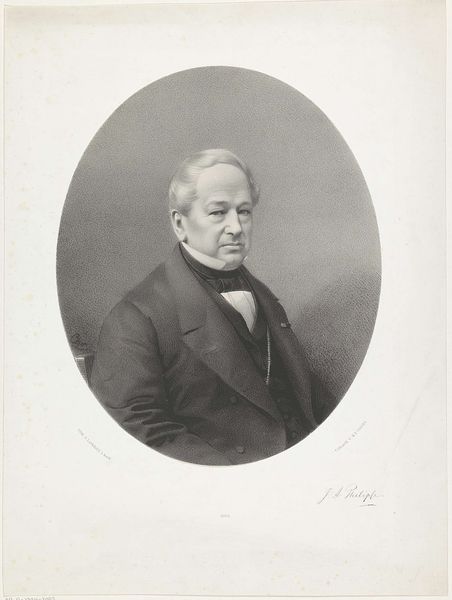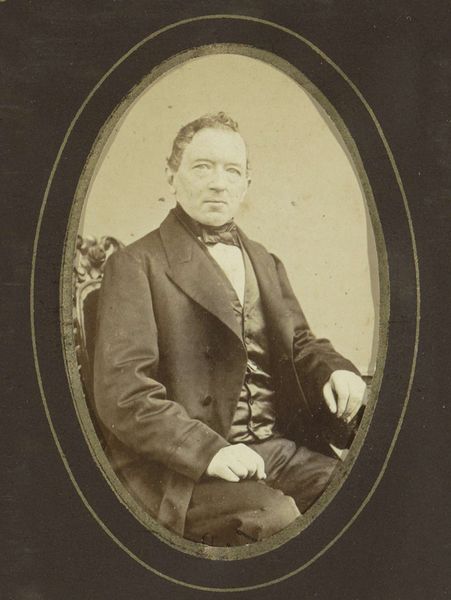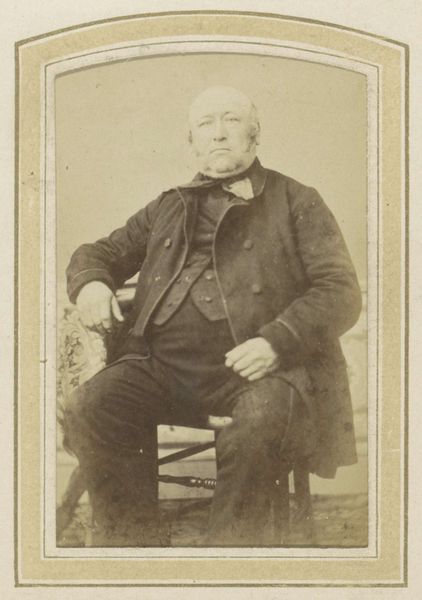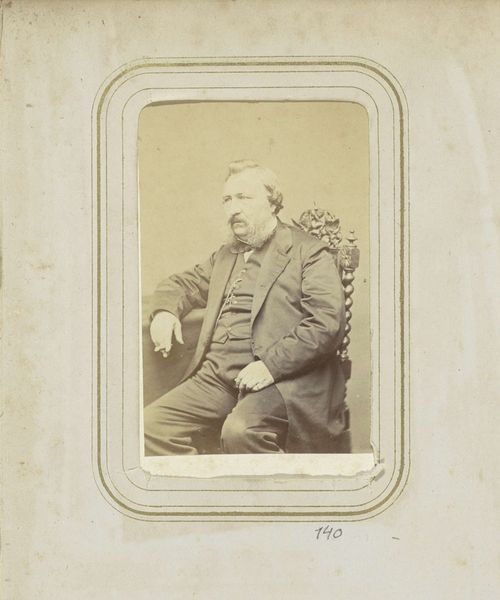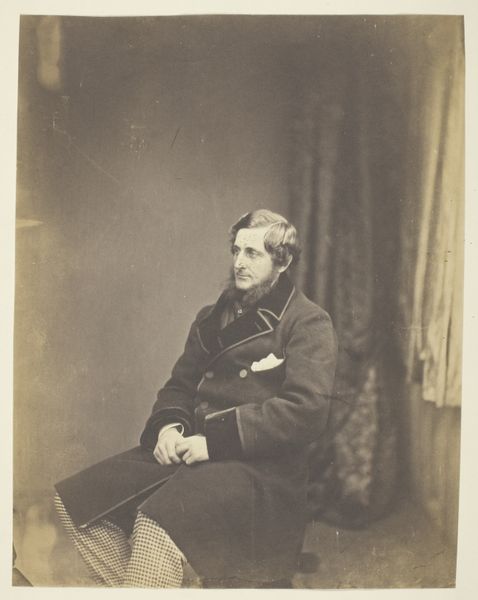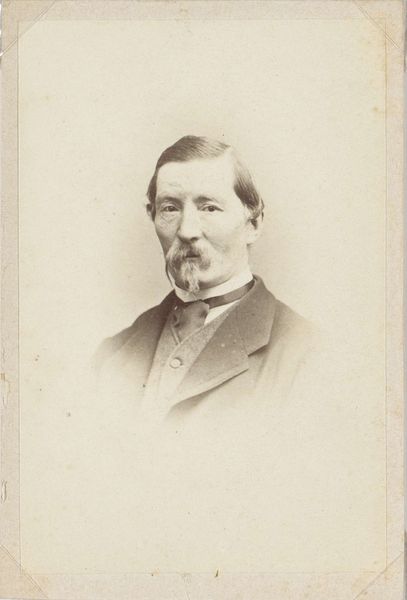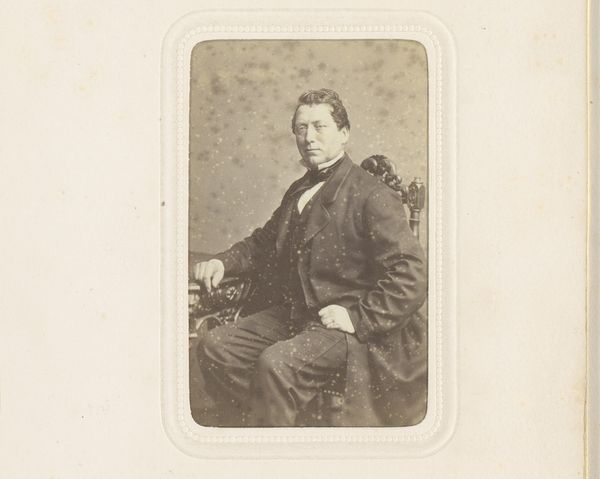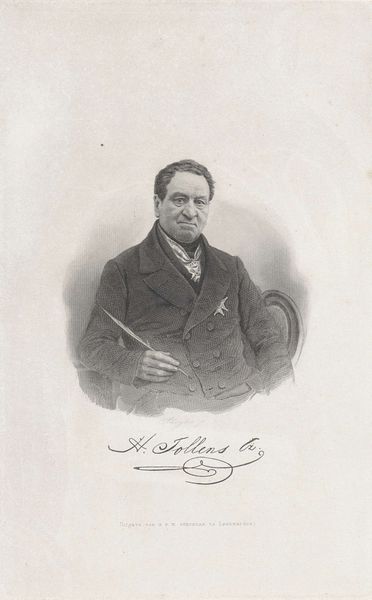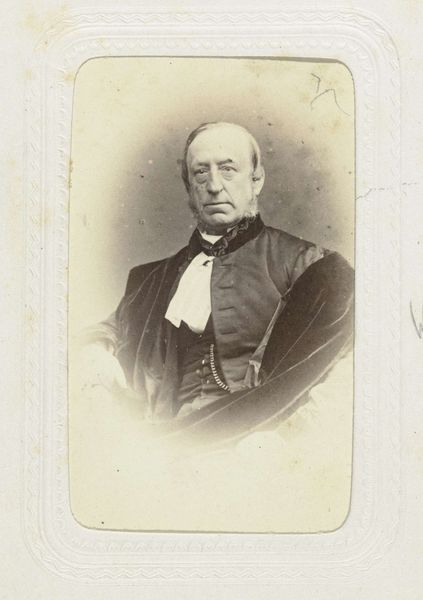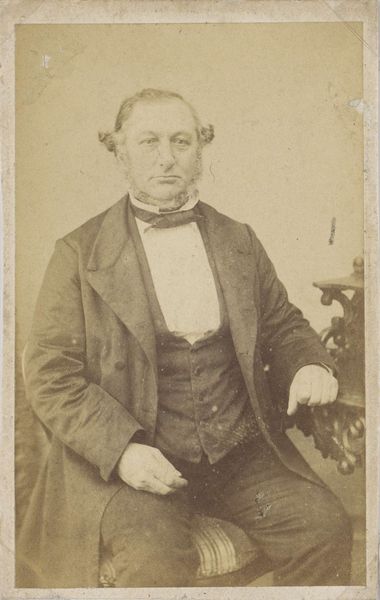
Portret van G.J. Mulder, hoogleraar in de faculteit Wis- en Natuurkunde aan de universiteit van Utrecht 1855 - 1864
0:00
0:00
Dimensions: height 297 mm, width 232 mm, height 438 mm, width 332 mm
Copyright: Rijks Museum: Open Domain
This photograph by Louis Wegner captures G.J. Mulder, a professor at the University of Utrecht. The symbol of the pillar subtly alludes to Mulder's intellectual and societal standing. The pillar, an ancient motif, appears in various forms throughout history. Think of the stoa in ancient Greece where philosophers gathered. In the ancient world, columns were associated with strength, stability, and support, frequently adorning temples and palaces. Consider its presence in triumphal arches in Rome, or the pillars in Renaissance paintings, denoting status and permanence. The pillar, in this context, psychologically suggests a silent, powerful force, much like the esteemed professor. Over time, the pillar has evolved, representing not only physical support but also intellectual and moral fortitude, reflecting society's collective memory of power and knowledge. It is a symbol constantly resurfacing, adapted, and imbued with new significance across eras.
Comments
No comments
Be the first to comment and join the conversation on the ultimate creative platform.
